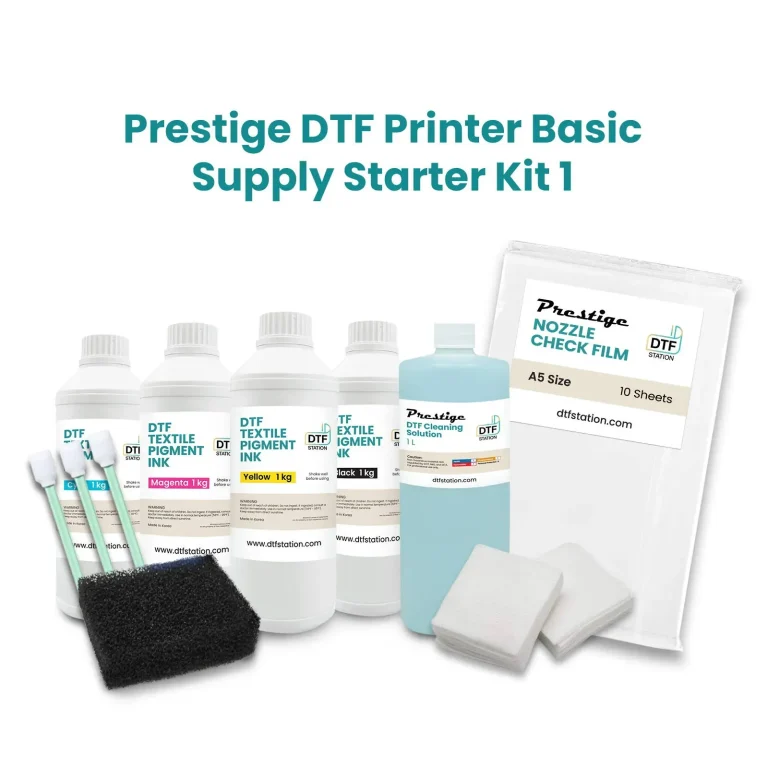DTF Supplies are revolutionizing the world of textile printing, offering a modern solution for both professional businesses and enthusiastic hobbyists. The Direct-to-Film (DTF) technique enables creators to produce striking designs with exceptional color vibrancy and durability. To fully leverage this innovative printing method, it is crucial to understand the key DTF supplies required for success, including DTF printing equipment, transfer films, and heat press machines for DTF applications. By equipping yourself with the right tools and knowledge—like expert DTF printing tips—you can elevate your projects and unleash your creativity. Join us as we delve into the ultimate guide that will transform your DTF printing experience.
In the realm of textile decoration, Direct-to-Film (DTF) printing is becoming an industry favorite, thanks to its effective application for custom designs. Known for its ability to produce high-quality graphics that adhere well to various materials, this printing method employs specialized DTF film and adhesive systems that make it incredibly versatile. The essential gear needed for this process includes not only DTF printers but also the right transfer films and presses that facilitate perfect results. Understanding these components and familiarizing yourself with DTF techniques can dramatically improve the quality of your printed products. Explore this guide to uncover the essentials that will help you master this cutting-edge printing technology.
The Importance of Quality DTF Printing Equipment
When it comes to Direct-to-Film (DTF) printing, the quality of your equipment can drastically influence the final output. Investing in high-grade DTF printers is essential, as these machines are specifically designed to lay vibrant inks onto transfer films with precision. Brands like Epson and Brother offer printers tailored for this technique, ensuring optimal performance and reliability. The right machinery not only enhances print quality but also contributes to the efficiency of your workflow, allowing for smoother operations and quicker turnaround times.
Moreover, pairing your DTF printer with compatible inks and transfer films is critical. Using reformulated inks designed for DTF will improve adhesion and color vibrancy, ensuring that each print pops with clarity. Therefore, focusing on quality equipment from the beginning can save you time, reduce errors, and create a superior end product that stands out in a competitive market.
Frequently Asked Questions
What are the essential DTF supplies needed for successful DTF printing?
To achieve successful DTF printing, you need a few essential supplies, including a high-quality DTF printer, DTF transfer films in various finishes, adhesive powder for bonding the ink to fabrics, and a reliable heat press machine. Each of these components plays a crucial role in ensuring vibrant color reproduction and durability in your prints.
How do I choose the best DTF printing equipment for my needs?
When selecting DTF printing equipment, consider factors such as the type of DTF printers suited to your production scale, compatibility with various DTF transfer films, the quality of inks used, and the precision features of heat press machines for accurate temperature and pressure settings. Investing in reputable brands is key to achieving high-quality prints.
What types of DTF transfer films are available, and how do they affect print quality?
DTF transfer films come in multiple finishes, including matte and gloss. The type of film you select can significantly impact the vibrancy, clarity, and durability of your prints. Advanced transfer films are specifically designed to optimize color retention and enhance the overall print quality, making them a crucial component of DTF printing.
Can I use regular heat press machines for DTF printing, or do I need specialized equipment?
You can use regular heat press machines for DTF printing, but it is crucial to select models that offer adjustable temperature and pressure settings. Specialized heat press machines for DTF printing may provide better results by ensuring even application, which is vital for achieving quality adhesion between the DTF transfer films and the fabrics.
What are some helpful DTF printing tips for beginners to improve their output?
For beginners in DTF printing, it helps to invest in quality supplies, master the techniques through hands-on experimentation, and utilize online resources and communities for tips and troubleshooting advice. Documenting your processes will also aid in refining your skills and achieving consistent print quality.
What are the latest market trends in DTF supplies that beginners should be aware of?
Current market trends in DTF supplies include the growing versatility of applications across different fabric types, increased demand for eco-friendly materials, and continuous technological advancements that improve print quality. Staying updated on these trends can enhance your competitive edge in the DTF printing industry.
| Component | Description | Key Benefits |
|---|---|---|
| DTF Printers | Specialized printers for high-quality film printing | Vibrant colors, long-lasting prints, reliability. |
| Transfer Films | Films that transfer designs onto fabrics | Enhances color vibrancy and clarity. |
| Adhesive Powder | Binds ink to fabric for durability | Improved adhesion for professional quality prints. |
| Heat Press Machines | Applies heat and pressure to transfer films | Precision in temperature and pressure for best results. |
Summary
DTF Supplies are essential components that can significantly enhance your printing experience, whether for business purposes or personal projects. The transformation in textile printing with DTF technology allows for diverse applications and sustainable options to meet market demand. Investing in high-quality equipment, refining techniques, and staying updated with the latest trends will empower you to harness the full potential of DTF printing. Embrace this innovative method with the right DTF supplies, and you will achieve remarkable results that elevate both your skills and your creative output.

